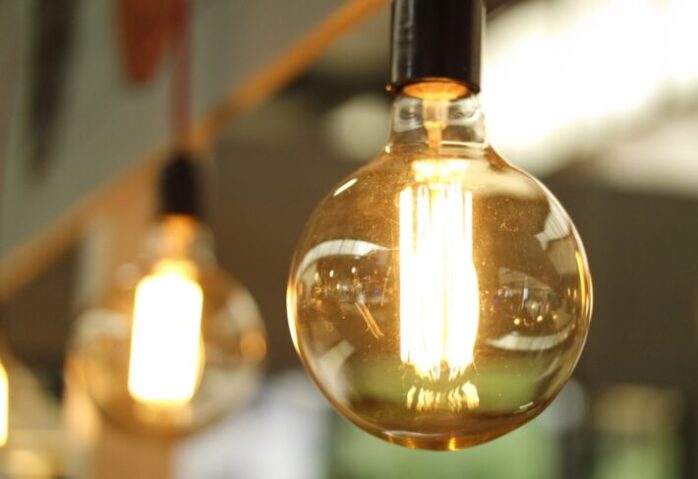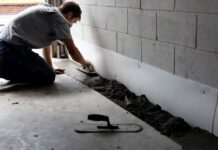
Energy efficiency is a vital topic for today’s homeowners for two significant reasons — environmental impact and cost. In recent years, contractors and interior designers have implemented energy-conscious tools and resources into their design plans — this is becoming crucial for the health and longevity of the planet and the finances of individual households.
Homeowners are taking on projects of their own to increase the functionality and efficiency of their homes. From big-ticket items to the smallest accessories, every aspect makes a difference in the long-run.
Let’s take a look at the most efficient ways to lower your home’s energy costs.

Start From the Top
The exterior of the home is often vulnerable to energy loss, especially in older homes. According to HGTV, the average home loses 30 percent of its heat due to air leakage. As a result, your furnace needs to work overtime to compensate for the energy deficit. Before you inspect the interior, you should find critical upgrades on the exterior of the home.
Roof conditions are a common culprit when it comes to energy loss. It’s not uncommon for older homes to go decades without a roof replacement, but it can make all the difference. Dated roofs often come with structural issues, inadequate insulation, and poor ventilation in the attic. When these issues are left unattended, it can significantly increase the cost of your monthly utilities.
The material you choose for your new roof is an important factor to consider. Asphalt shingles are commonly used because there are upgraded models that now come with cooling technology. This can help prevent heat buildup in the attic and reduce your cooling costs.
Some homeowners prefer metal roofs, which have their own cost benefits. Their reflective heat properties can help reduce any radiant heat transfers to your home. On the other hand, tile and slate are popular because they act as natural insulators, keeping the home’s temperature consistent. No matter which method you choose, always speak to your contractor to ensure you’re making the right decision for your household.

Big-Ticket Appliances
The appliances in your home are always plugged in — and when it comes to fridges and freezers, they’re always turned on. These big-ticket items are likely a significant source of energy consumption in your home. If they’re older models, it might be time for an upgrade.
From refrigerators to dishwashers, dehumidifiers and air conditioners, replacing them will likely be a high up-front cost. However, they offer real and tangible benefits. When it comes time to sell your home, upgraded appliances offer significant resale value.
Once you’ve made the initial purchase and your appliances are maximizing their energy-efficiency, you should see your monthly utility bills begin to decrease. With the extra money you’re saving, you can decide where it’s better spent or whether you can add it to your savings.

Vulnerable Entry Points
Your home is full of vulnerable entry points, where drafts and temperature changes can impact the functionality and comfort of the house. Old windows and doors are the most common culprits of energy consumption, but they’re also one of the most straightforward fixes.
Investing in quality windows and doors not only benefits your wallet but also adds more curb appeal and value to your home. The experts at Centennialwindows.com have all the information and resources you need to figure out which energy-efficient windows are suitable for your household.

Conserving Water
Standard electric water heaters will heat your home’s water even when you’re not there. As energy-efficiency becomes a greater priority for modern homeowners, there are ways to streamline these costs. Some households are installing occupancy sensors to their current electric water heaters. This handy device tracks when someone is in the home and will only heat the water when someone uses it. Sometimes the simplest devices can save you easy money every month.

Lighting Up the Room
Replacing the lights in your home is one of the simplest ways to reduce your utility costs and implement better environmental practices. Switching out those dated, energy-deficit lightbulbs is a project you can easily take on yourself — unlike some of the big-ticket projects that require professional contractors.
LED lights are becoming increasingly popular in energy-conscious homes. They typically use less energy than older bulbs and can last for much longer. In previous years, light bulbs were just that — homeowners didn’t consider their environmental impact.
These days, there are a variety of LED lights for households to choose from. For families with young children, LED lights radiate far less heat which means they’re safer to have in the house.
From under-cabinet strips to chandeliers, there are more lighting possibilities than ever. Homeowners can simultaneously focus on style, budget, and energy-efficiency.

Energy-Conscious Accessories
Even the smallest details can impact the efficiency of your home. Energy-efficient accessories like fans or outlets are often left plugged in overnight, so they must be using as little power as possible.
Smart outlets are commonly used to manage energy consumption for your electronics — from tablets to mobile devices or charging your laptop. Additionally, if you leave the plugin in the socket, even if your device is no longer charging, a smart outlet can reduce energy waste and save you money at the same time.
If you’re constantly worrying if you left lights on or whether or not the coffee pot is off, it might be worth investing in a management system. Energy management systems are designed to control the temperatures and lights in your home from a remote device. Homeowners are looking for more efficient ways to manage their household, and they’re looking at all-inclusive systems for more seamless control.
For those hard-to-reach areas — particularly behind furniture or appliances— you might want to consider a smart power strip — a device designed to cut excess power from anything that is plugged in. These devices will likely vary in price, but they offer a unique cost-saving way to minimize your home’s energy usage. In the long-run, sometimes it takes spending more money upfront on saving you money in the future.











